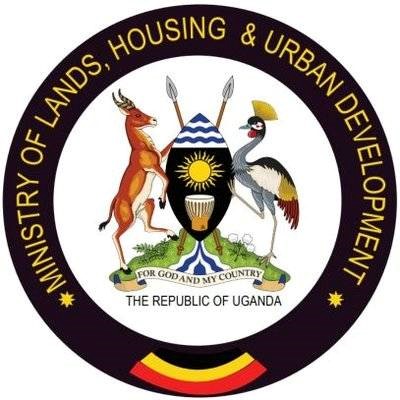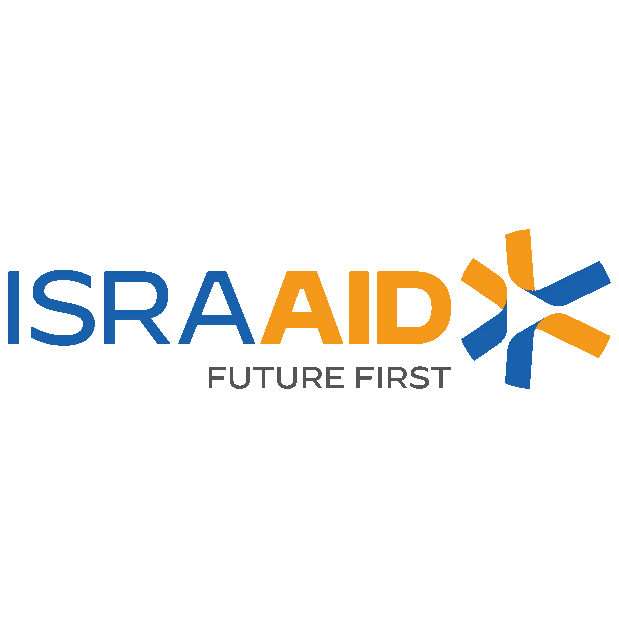Gis for Monitoring And Evaluation Training
INTRODUCTION
Geographic Information Systems (GIS) have become indispensable tools for enhancing the effectiveness of Monitoring and Evaluation (M&E) processes across various sectors. In the context of M&E, GIS allows for the spatial analysis of data, enabling organizations to visualize, track, and assess program performance across different geographic areas. This GIS for M&E training course is designed to introduce participants to the practical use of GIS tools and techniques to support monitoring and evaluation activities.
The integration of GIS in monitoring and Evaluation makes it possible to link, or integrate information that is difficult to associate through any other means. With GIS M&E/Researchers are able to use combinations of mapped variables to build and analyze new variables. Presenting data in the form of a map helps to understand the significance of where, when, and by whom. By using the GIS to link data from multiple programs the training will make it possible to understand the individual programs better but also better understand the relationship between the programs. Spatial analysis techniques will also help with driving outcomes measures.
The course will provide participants with a foundational understanding of how GIS can improve the accuracy and efficiency of data collection, analysis, reporting, and decision-making. Participants will learn how to apply GIS for visualizing program impact, identifying trends, and ensuring resource optimization in M&E processes.This course is designed to equip participants with the necessary skills to incorporate Geographic Information Systems (GIS) into Monitoring and Evaluation (M&E) processes. It will cover both theoretical concepts and practical applications, ensuring participants can effectively utilize GIS to improve program monitoring, analysis, and reporting.
DURATION
5 days
TARGET AUDIENCE
The course targets government representatives, project teams, NGOs, multi and bilateral development organizations, consultancies, etc, who work as M&E specialists, project managers, researchers and technical specialists.
OBJECTIVES
By the end of this course the participants will be able to:
- Understand the Fundamentals of GIS in M&E:
- Introduce participants to the core concepts of GIS and its relevance to M&E.
- Provide a basic understanding of spatial data and the benefits of incorporating geographic analysis in M&E frameworks.
- Develop GIS-Based M&E Frameworks:
- Equip participants with the skills to integrate GIS into existing M&E systems to enhance spatial data collection and analysis.
- Demonstrate how GIS can help track program activities and outcomes geographically, allowing for better decision-making and resource allocation.
- Collect and Analyze Spatial Data for M&E:
- Teach participants how to gather spatial data using GIS tools and techniques, including GPS devices, mobile data collection apps, and satellite imagery.
- Provide hands-on experience in analyzing and interpreting spatial data to monitor program performance.
- Visualize M&E Data Using GIS:
- Train participants to create maps and spatial visualizations that display program performance and impact across geographic areas.
- Show how GIS can be used to communicate complex data through interactive maps, helping stakeholders better understand results.
- Enhance Decision-Making and Resource Allocation:
- Highlight how GIS-based M&E systems can support data-driven decision-making by providing insights into where interventions are most needed.
- Discuss how spatial analysis can improve the targeting and efficiency of programs by identifying gaps or underserved regions.
- Monitor Program Outcomes and Impacts Spatially:
- Equip participants with the skills to use GIS for tracking and measuring program outcomes over time and across locations.
- Demonstrate how spatial analysis can reveal patterns and trends that might be missed with traditional M&E methods.
- Identify and Address Geographic Disparities:
- Teach participants how to use GIS to identify geographic disparities in service delivery, resource distribution, and program impact.
- Show how GIS can be used to target interventions in areas of greatest need, ensuring equitable program reach and impact.
- Improve Reporting and Communication Using GIS:
- Train participants to use GIS-generated maps and reports to communicate results to stakeholders, donors, and policymakers.
- Discuss how visual tools can enhance transparency, accountability, and advocacy in M&E reporting.
- Apply GIS for Real-Time Monitoring:
- Introduce participants to the use of GIS for real-time or near-real-time monitoring of program activities, allowing for faster adjustments and responsiveness.
- Discuss the integration of GIS with mobile data collection tools for efficient field monitoring.
COURSE OUTLINE
Module 1: Introduction to GIS and M&E
- Overview of GIS and its Applications:
- Understanding the basic concepts of GIS.
- The role of GIS in various sectors, including development, health, education, and environment.
- Relevance of GIS in M&E:
- Why GIS matters for M&E.
- Advantages of spatial analysis in program monitoring and evaluation.
- Key Terminologies in GIS:
- Spatial data, layers, projections, coordinates, etc.
- Difference between raster and vector data.
Module 2: Introduction to Spatial Data
- Types of Spatial Data:
- Overview of different types of spatial data: Points, lines, polygons, and raster data.
- Sources of spatial data: Satellite imagery, GPS, field surveys, public datasets, and government data.
- Data Collection Methods:
- Collecting spatial data using GPS.
- Mobile data collection apps (e.g., KoboToolbox, OpenDataKit, Survey123).
- Data Formats and GIS Software:
- Overview of common GIS software (e.g., QGIS, ArcGIS).
- Understanding GIS file formats (e.g., Shapefile, GeoJSON, KML).
Module 3: GIS Data Collection for M&E
- Designing M&E Data Collection Tools:
- Integrating GIS into M&E data collection forms.
- Mobile-based data collection with GPS coordinates.
- Field Data Collection Using GIS Tools:
- Hands-on training on using GPS-enabled mobile apps for field data collection.
- Techniques for recording location data.
- Working with Remote Sensing Data:
- Introduction to satellite imagery and aerial photography for M&E.
- Using remotely sensed data to monitor program interventions.
Module 4: Spatial Analysis for M&E
- Introduction to Spatial Analysis:
- Understanding spatial relationships: Proximity, containment, and overlap.
- Basic spatial analysis techniques: Buffering, overlay, and interpolation.
- Mapping and Analyzing Program Impact:
- Using GIS to map program reach, beneficiary distribution, and service areas.
- Identifying geographic disparities in service delivery.
- Analyzing Program Trends Over Time:
- Temporal mapping for monitoring changes over time.
- Using GIS to track program outcomes and measure impact spatially.
Module 5: GIS Visualization for M&E Reporting
- Creating Maps for M&E Reports:
- Designing effective maps for visualizing M&E data.
- Symbolizing data for better interpretation and storytelling.
- Customizing Map Layouts and Legends:
- How to create intuitive map legends, labels, and scale bars.
- Choosing appropriate color schemes and symbols for clear communication.
- Generating Interactive GIS Dashboards:
- Introduction to creating web-based interactive maps and dashboards for real-time monitoring.
- Using platforms like ArcGIS Online, Google Earth Engine, and Mapbox.
Module 6: GIS for Decision-Making in M&E
- Using GIS to Enhance Decision-Making:
- Case studies on how GIS has improved decision-making in monitoring and evaluation.
- GIS in resource allocation and program targeting.
- Spatial Decision Support Systems (SDSS):
- Introduction to SDSS and how it can be used for decision-making in M&E.
- Examples of SDSS applications in various sectors.
- GIS for Scenario Planning and Risk Analysis:
- Using GIS to model different intervention scenarios.
- Risk mapping and analysis for preemptive decision-making.
Module 7: Real-Time Monitoring Using GIS
- Real-Time Data Collection:
- Using GIS for real-time program monitoring and quick assessments.
- Integrating GIS with mobile data collection platforms for live updates.
- GIS for Rapid Needs Assessments:
- Employing GIS for post-disaster or emergency program monitoring.
- Rapid spatial assessments to guide humanitarian interventions.
- Integrating GIS with Monitoring Dashboards:
- How to link real-time GIS data to web-based monitoring dashboards.
- Platforms for real-time spatial data visualization (e.g., PowerBI, Tableau, ArcGIS).
Module 8: Ethics, Data Security, and Challenges in GIS for M&E
- Ethical Considerations in GIS and M&E:
- Data privacy, especially when handling sensitive geographic information.
- Ethical issues in mapping vulnerable populations.
- Ensuring Data Security and Accuracy:
- Best practices for maintaining the integrity of spatial data.
- Preventing and mitigating common GIS errors in M&E data.
- Challenges and Limitations of GIS in M&E:
- Addressing the challenges of working with incomplete or inaccurate spatial data.
- Overcoming technical limitations in GIS tools and software.
CERTIFICATION
- Upon successful completion of this training, participants will be issued with Macskills Training and Development Institute Certificate
TRAINING VENUE
- Training will be held at Macskills Training Centre. We also tailor make the training upon request at different locations across the world.
AIRPORT PICK UP AND ACCOMMODATION
- Airport pick up and accommodation is arranged upon request
TERMS OF PAYMENT
- Payment should be made to Macskills Development Institute bank account before the start of the training and receipts sent to info@macskillsdevelopment.com
Gis For Monitoring And Evaluation Training in Kenya
| Dates | Fees | Location | Action |
|---|---|---|---|
| 20/10/2025 - 24/10/2025 | $2,900 | Kigali |
|
| 27/10/2025 - 31/10/2025 | $1,250 | Nairobi |
|
| 03/11/2025 - 07/11/2025 | $4,000 | Johannesburg |
|
| 17/11/2025 - 21/11/2025 | $2,900 | Kigali |
|
| 24/11/2025 - 28/11/2025 | $1,250 | Nairobi |
|
| 01/12/2025 - 05/12/2025 | $4,950 | Dubai |
|
| 08/12/2025 - 12/12/2025 | $1,250 | Nairobi |
|





















